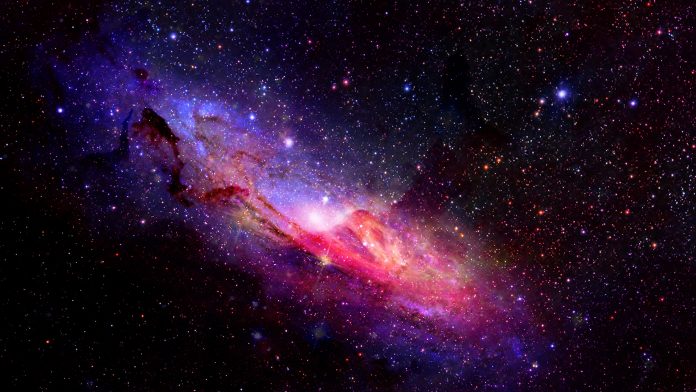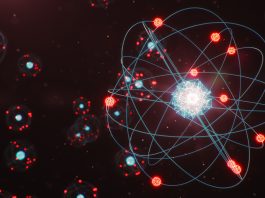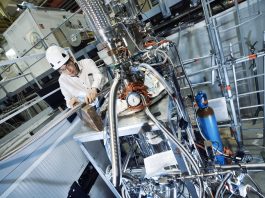Physicists participating in the ATLAS experiment are on the hunt for new, long-lived particles that could help to explain several outstanding mysteries of the Universe.
What have scientists discovered regarding long-lived particles?
High-energy collisions at the Large Hadron Collider (LHC) permit researchers to clearly investigate heavy Standard Model particles, such as the Higgs boson, that decay almost immediately at the LHC collision point. However, new long-lived particles (LLPs) could travel sizeable distances through the ATLAS detector before decaying.
Examining the decay of any particle is a complicated task, however it is typically made simpler by presuming that it decayed near the LHC collision point. This puts LLPs in a blind spot, as they could decay anywhere in the detector. To ensure no possibility is left unexplored, ATLAS physicists have developed a range of new strategies to look for LLPs with various possible characteristics.
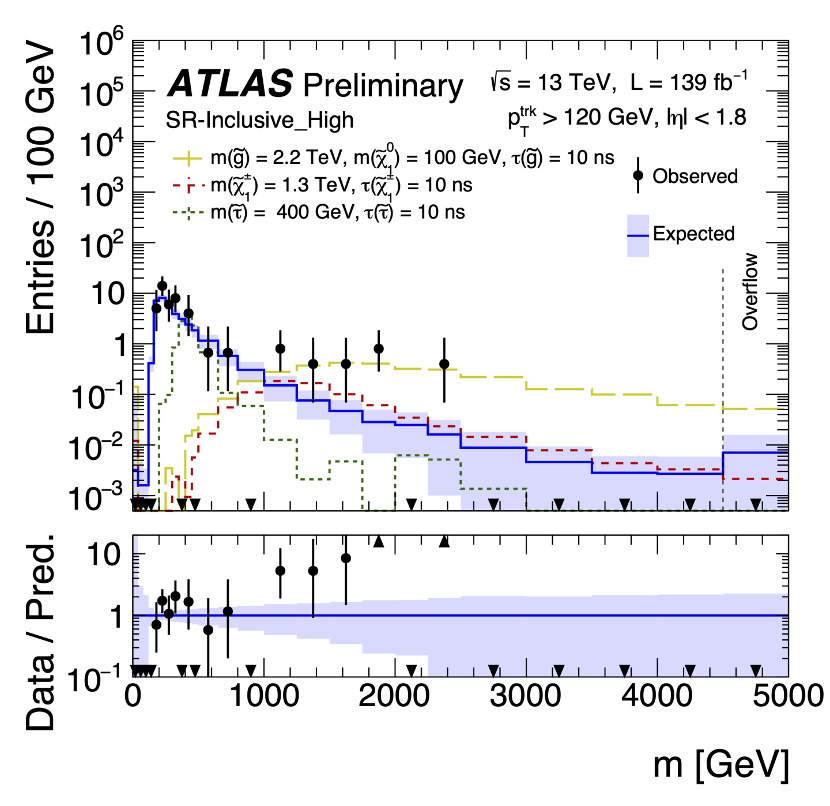
(Image: ATLAS collaboration/CERN)
What purpose do neutrinos have in this experiment?
Neutrinos have bewildered physicists for a long time, as they have only ever been perceived to be ‘left-handed’ (meaning that their spin and momentum are opposed), while all other particles can also be examined in ‘right-handed’ states. It is conceivable that right-handed neutrinos exist but are very heavy, and therefore trickier to produce in nature. These particles – called ‘heavy neutral leptons’ (HNLs) – could also clarify why neutrinos are so light.
To discover these HNLs, ATLAS physicists sought leptons that were originating from a common point at a short distance from the collision point. Scientists were conscious that the HNL could have decayed to a mixture of electrons, muons, and missing energy. Using the decay products, they recreated the possible HNL mass and were proficient in setting limits on masses between 3 and 15 GeV. They also reported on HNL decays to electron–muon pairs for the very first time.
How has machine learning contributed to distinguishing between background interactions?
If a new, neutral LLP were to decay to quarks in the outer layers of the calorimeter, it would leave behind sprays of collimated particles called ‘displaced jets.’ These would leave a rare signature in the detector: the jets would have no associated particle trajectories and would be very narrow compared to their Standard Model counterparts.
Thus, scientists have exploited the unusual qualities of displaced jets to discover pairs of neutral LLPs. They developed novel machine-learning methods to distinguish displaced jets from background interactions. Although, no significant excess of events has been spotted so far.
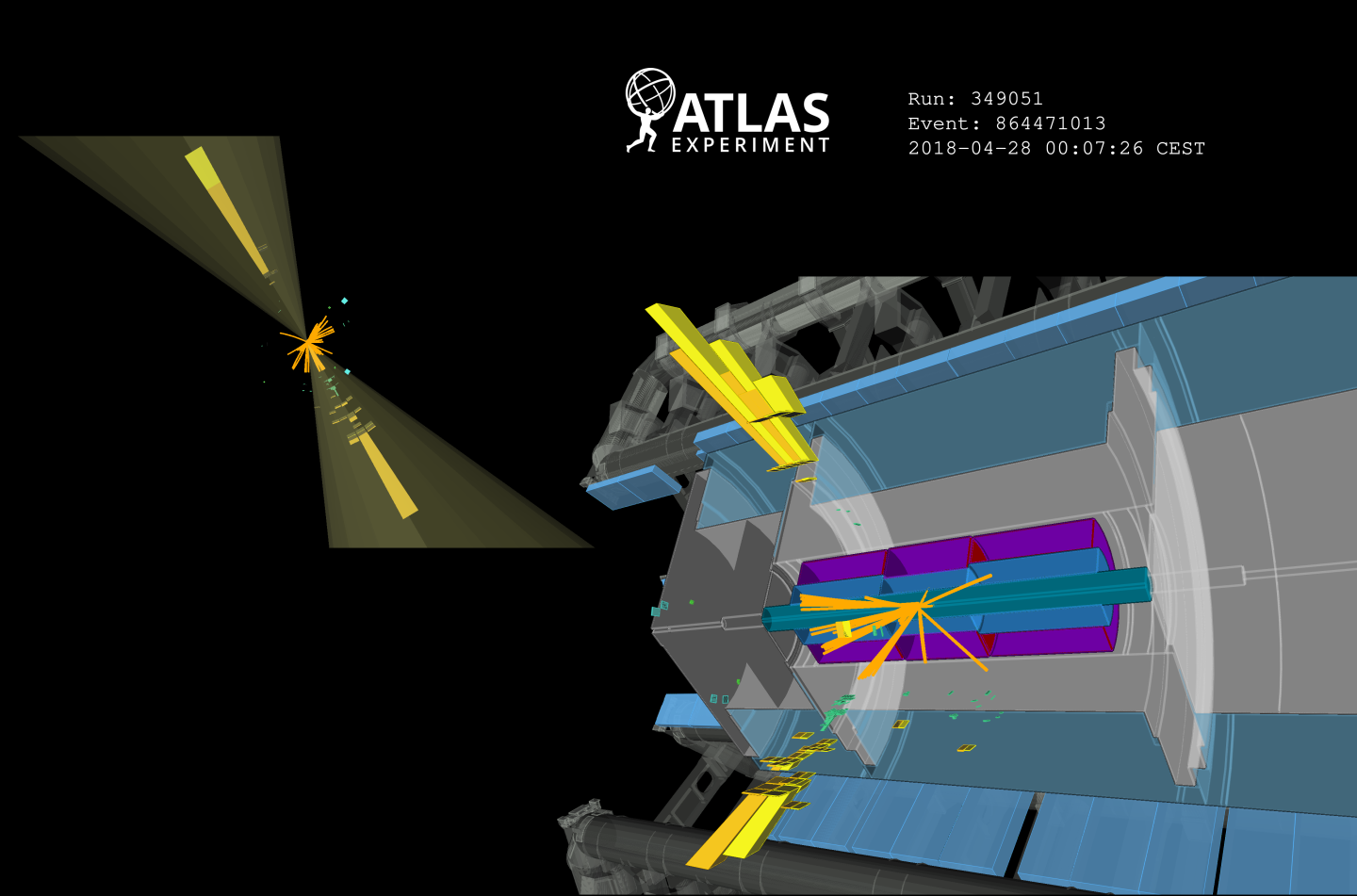
(Image: CERN)
What if the neutral LLP decays to leptons rather than quarks?
‘Dark photons’ are a type of LLP believed to behave this way and would leave behind collimated sprays of leptons in the detector, called ‘lepton-jets.’
ATLAS’ newest exploration for dark photons utilises machine-learning techniques that exploit patterns of raw energy deposits in each layer of the detector, which is a first for the collaboration. Although no excess of events was observed, physicists have set stringent new limits on the existence of dark photons and were also able to probe dark-photon decays to electrons for the first time.
What are the next steps in the ATLAS experiment?
When investigating new particles, physicists are required to look for their decay products – or do they? If a heavy charged LLP exists, it will leave abnormally large energy deposits in the ATLAS tracking detector. This is an exceptional case where physicists could potentially detect a new particle immediately.
However, predicting the Standard Model background procedures in this search is very difficult. To tackle this issue, ATLAS physicists utilised a sophisticated data-driven method, applying tracks with regular energy deposits for comparison.
Thus, the observed data agrees with the Standard Model expectation, except for a small excess of events in a high-energy and high-mass region. Although interesting, the measurements made revealed that none of the candidate events match the heavy new particle hypothesis. Further investigation into this phenomenon, and the collection of additional data, could shed more light on it.
At the heart of these analyses is one key question: what if new particles are hiding from standard searches? ATLAS researchers have developed novel, creative ways to explore the rich diversity of potential LLP decays. The search continues, with Run three of the LHC promising new data and new innovations to further this exciting programme of research, which could provide more answers into the mysteries of the Universe.
To keep up to date with our content, subscribe for updates on our digital publication and newsletter.

